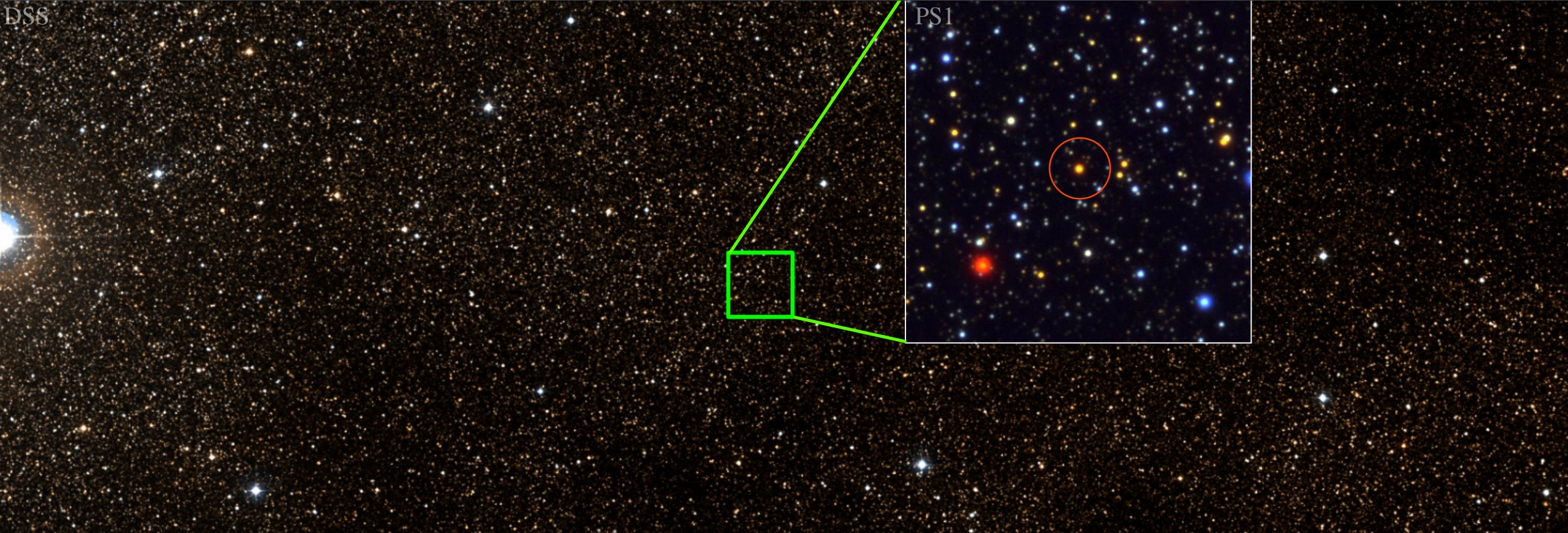7-year eclipse reveals 'exceptionally rare' binary system with 1000-year orbit
The star Gaia17bpp began brightening again after a 7-year eclipse by a strange companion star drew to a close, indicating it exists in a rare binary system.

The dimming of a distant star wasn't caused by internal changes, but rather by it being eclipsed by a cloud of dust surrounding a companion star. The discovery implies the star, Gaia17bpp, is part of a rare type of binary system and its recently observed sudden brightening was the result of the eclipse by a white dwarf companion ending.
Astronomers made the discovery as they searched data from the Gaia survey for unusual and oddball stars. They found that Gaia17bpp had gradually brightened over a two-and-a-half-year period with follow-up investigations revealing it had been dimmed for seven years as a result of being obscured by dust surrounding its odd companion.
The discovery was one of exceptional good fortune as the binary system has a long orbital period, meaning it is rare to catch one eclipsing the other. In fact, such events may come just once a millennium.
Related: Pew, pew! Massive 'oddball' blasts a jet of material at over a million mph
"We believe that this star is part of an exceptionally rare type of binary system, between a large, puffy older star — Gaia17bpp — and a small companion star that is surrounded by an expansive disk of dusty material," one half of the duo, University of Washington astronomer Anastasios Tzanidakis, said in a statement. "Based on our analysis, these two stars orbit each other over an exceptionally long period of time — as much as 1,000 years. So, catching this bright star being eclipsed by its dusty companion is a once-in-a-lifetime opportunity."
Gaia's observations of Gaia17bpp only date back to 2014, so along with collaborator University of Washington assistant professor of astronomy and associate director of the DiRAC Institute, James Davenport, Tzanidakis had to do extra investigative legwork to solve the mystery of the star's behavior.
The first step for the duo and their teammates was to combine Gaia observations with observations from other missions such as Pan-STARRS1, WISE/NEOWISE, and the Zwicky Transient Facility, which date as far back as 2010.
Breaking space news, the latest updates on rocket launches, skywatching events and more!
This revealed to Tzanidakis and Davenport that the star had become 63 times or 4.5 magnitudes dimmer over the course of 7 years between 2012 to 2019 and that the rapid brightening of Gaia17bpp marked the end of this period.
The astronomers went back further using the DASCH program, a digital catalog of over 100 years of astrophotographic plates stored at Harvard University, to track the star's brightness since the 1950s. They found no similar periods of dimming for Gaia17bpp or other stars in its vicinity.
"Over 66 years of observational history, we found no other signs of significant dimming in this star," said Tzanidakis. He and Davenport think that Gaia17bpp exists in a rare type of binary system with a dusty companion star.
"Based on the data currently available, this star appears to have a slow-moving companion that is surrounded by a large disk of material," Tzanidakis continued. "If that material were in the solar system, it would extend from the sun to Earth's orbit, or farther."
The binary containing Gaia17bpp isn't the first dusty system spotted by astronomers. One notable example of such a binary contains Epsilon Aurigae. For 2 years out of every 27, this star in the constellation Auriga is eclipsed by its large and dim companion.
While the companion of Epsilon Aurigae is of a mysterious nature, its identity thus far unconfirmed, preliminary data indicates that the dusty eclipsing companion of Gaia17bpp is a white dwarf star.
White dwarfs are stellar remnants that are born when stars of similar masses to the sun run out of hydrogen fuel for nuclear fusion and can no longer generate the energy that protects them from gravitational collapse. Lacking the mass to trigger further nuclear fusion that would see them join a pathway to becoming a neutron star or black hole these low-mass stars are instead left as smoldering white dwarfs.
Though the nature of the companion of Gaia17bpp may be known, the source of the dusty debris which takes a disk-like shape around the white dwarf remains a mystery.
Compared to other dusty binaries the 7-year dimming of Gaia17bpp indicates what is by far the longest eclipse period. Additionally, the vast distance between Gaia17bpp and its companion means it will be centuries before any other astronomers witness the dusty binary during an eclipse.
"This was a serendipitous discovery. If we had been a few years off, we would've missed it," Tzanidakis concluded. "It also indicates that these types of binaries might be much more common. If so, we need to come up with theories about how this type of pairing even arose. It's definitely an oddity, but it might be much more common than anyone has appreciated."
Tzanidakis presented the team's findings at the 241st meeting of the American Astronomical Society in Seattle on Tuesday (Jan. 10).
Editor's note: This story has been updated to reflect a correction in the statement. Follow us on Twitter @Spacedotcom or on Facebook.

Robert Lea is a science journalist in the U.K. whose articles have been published in Physics World, New Scientist, Astronomy Magazine, All About Space, Newsweek and ZME Science. He also writes about science communication for Elsevier and the European Journal of Physics. Rob holds a bachelor of science degree in physics and astronomy from the U.K.’s Open University. Follow him on Twitter @sciencef1rst.

